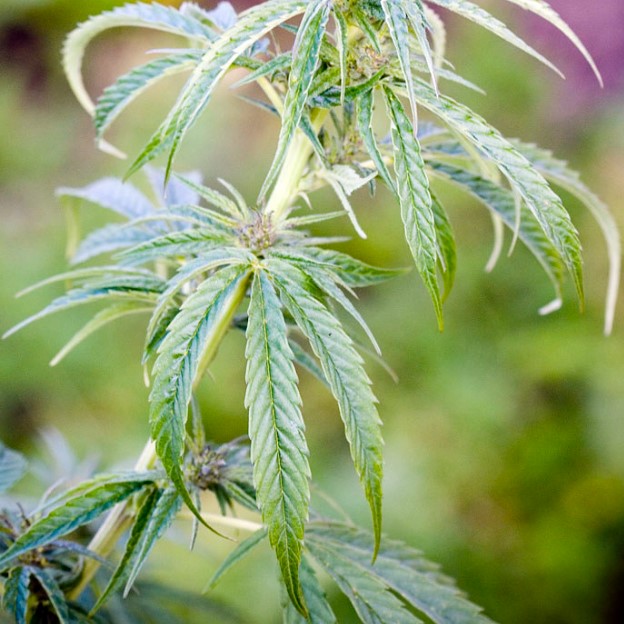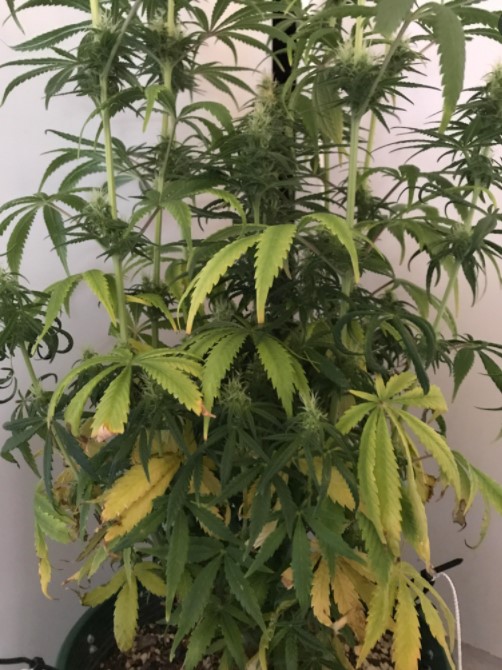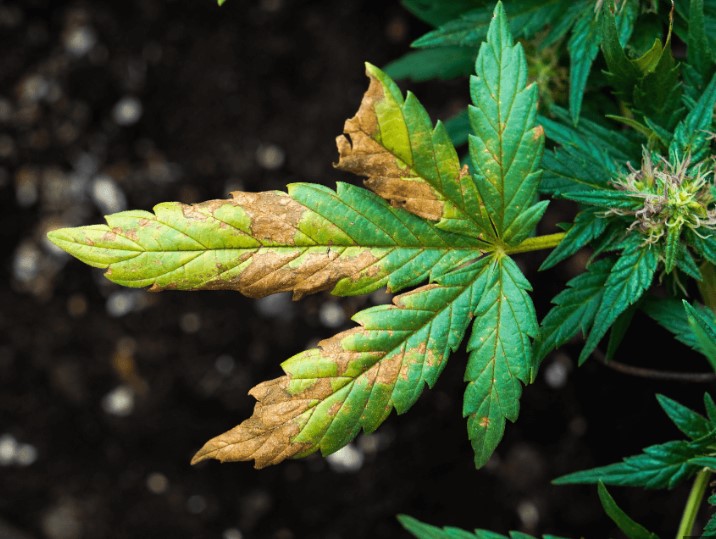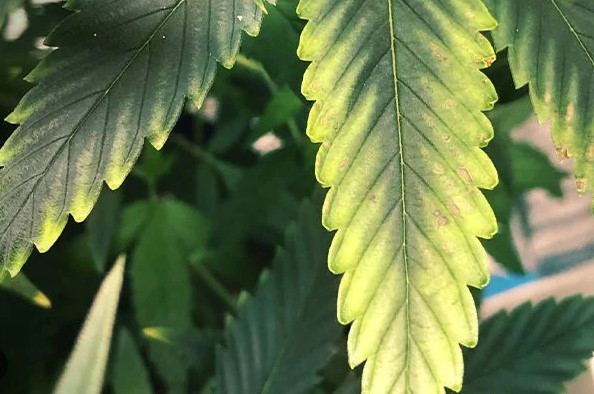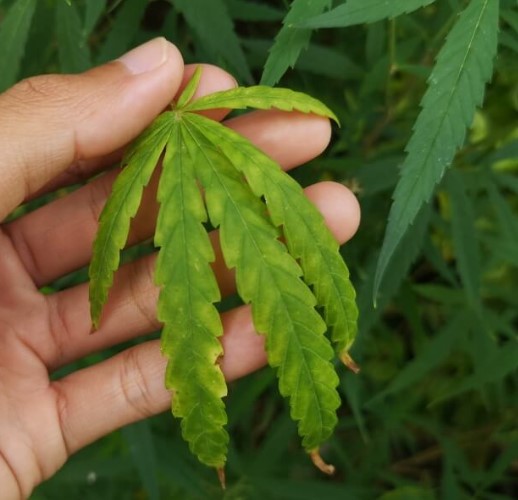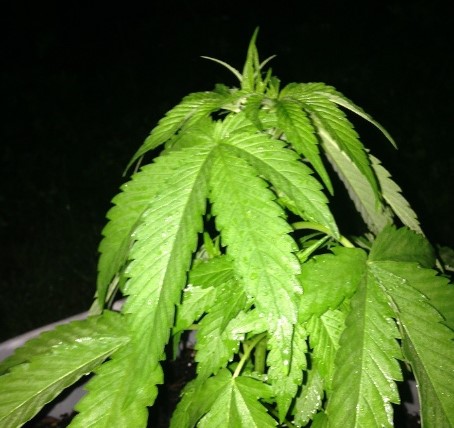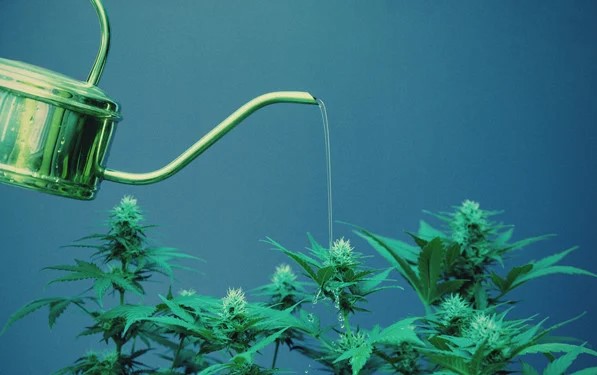Growing cannabis can be a rewarding experience, whether you’re a homegrower or a business owner. However, it comes with its own set of challenges, one of which is dealing with sagging, wilting, or drooping leaves. Understanding why cannabis leaves droop and knowing how to address it is crucial for maintaining healthy plants and ensuring a quality crop.
In this comprehensive guide, we will explore the various factors that can cause cannabis leaves to sag, wilt, or droop down. We’ll discuss the connection between watering and drooping, nutrient issues, and the phenomenon of nighttime drooping. Additionally, we’ll provide practical tips on nurturing drooping cannabis plants back to health. So, let’s dive in and learn how to overcome these challenges for greater cannabis yields.
Why Do Cannabis Leaves Droop?
Cannabis leaves are the powerhouse of the plant, responsible for creating the vital energy needed for growth through photosynthesis. When leaves start wilting or drooping, it indicates that something is amiss. Let’s explore some common reasons why cannabis leaves may droop:
Overwatering or Underwatering
Water is essential for plant growth, but both overwatering and underwatering can lead to drooping leaves. Overwatering is a common mistake, especially among first-time growers. It suffocates the roots, preventing the plants from using the energy generated through photosynthesis. On the other hand, underwatering deprives the plants of the water they need for internal processes, leading to wilting. Striking the right balance in watering is crucial for healthy plants.
Nutrient Issues
Proper nutrient balance is essential for cannabis plants to thrive. Too few or too many nutrients can cause leaves to droop and wilt. Nutrient deficiencies or excesses can be caused by factors such as improper pH levels, using artificial growing mediums, or inadequate supplementation. Finding the right balance is key to ensuring healthy and vibrant plants.
Nighttime Drooping
In some cases, cannabis plants naturally droop or wilt at night. This phenomenon, known as foliar nyctinasty, is a response to the changing environmental conditions. While it may not always indicate a problem with the plant’s health, it’s essential to monitor overall plant health to distinguish between natural drooping and potential issues.
Natural Fading Near Harvest: A Sign of Ripeness
As cannabis plants approach the end of their flowering stage, it’s not uncommon for leaves to exhibit a natural sagging and wilting phenomenon. This occurrence is often associated with the plant redirecting its energy towards bud development in the late flowering phase. As the plant matures, leaves naturally fade, signaling that the harvest window is approaching. This natural process can sometimes be mistaken for a problem, but in reality, it’s a positive sign that your cannabis plants are reaching the peak of ripeness. It’s crucial during this time to continue monitoring overall plant health and adjusting care accordingly, ensuring a successful and high-quality harvest.
The Connection Between Watering and Drooping Cannabis Leaves
Water plays a crucial role in a plant’s vital processes, from temperature regulation to nutrient absorption and transportation. Disrupting these processes by providing too much or too little water can cause leaves to droop and wilt. Let’s delve deeper into the connection between watering and drooping cannabis leaves:
Overwatering Effects
Overwatering cannabis plants can have catastrophic effects. When plants receive excessive water, their roots become suffocated, preventing them from utilizing the energy generated through photosynthesis. The excess moisture can also cause root softening and eventual death, leading to the demise of the entire plant. It’s crucial to provide proper drainage and allow the soil to dry out between waterings to avoid overwatering.
Underwatering Effects
Underwatering deprives cannabis plants of the water they need for photosynthesis and nutrient absorption. This can lead to wilting, stunted growth, and nutrient deficiencies. It disrupts the balance of oxygen absorption and transpiration, forcing the plants to expend more energy to absorb oxygen through the roots. To prevent underwatering, it’s important to ensure adequate watering and maintain proper moisture levels in the growing medium.
Finding the Right Balance
Maintaining the right balance between watering and moisture levels is crucial for preventing drooping leaves. It’s important to monitor the moisture content of the soil and ensure it’s neither overly saturated nor too dry. Proper watering practices, such as allowing the soil to dry out slightly between waterings, can help maintain optimal moisture levels for healthy plant growth.
Nutrients and Cannabis Drooping
In addition to water, cannabis plants require various nutrients for photosynthesis and overall health. Nutrient imbalances can cause leaves to wilt and droop. Let’s explore the importance of essential nutrients and how their deficiencies or excesses can impact cannabis plants:
Nitrogen
Nitrogen is a crucial nutrient for cannabis plants, especially during the vegetative growth stage. Deficiencies in nitrogen can cause the leaves to lighten in color and become yellow. Without adequate nitrogen, the plant’s growth can be stunted, resulting in reduced buds and early flowering.
Phosphorus
Phosphorus plays a significant role in photosynthesis and energy release within plant cells. When phosphorus levels are insufficient, cannabis plants may experience stunted growth, delayed flowering, and poor resin production. Symptoms of phosphorus deficiency include purple leaf stems, blackish-purple spots, and curled and dropped leaves.
Potassium
Potassium facilitates the production and movement of sugars and carbohydrates within cannabis plants. It also aids in root growth, transpiration, and flower development. Potassium deficiency can result in brown leaf tips, dehydration, curled leaves, and physically weak plants.
Magnesium
Magnesium is essential for carbohydrate and sugar production, as well as energy absorption from sunlight. Deficiencies in magnesium can cause yellowing of leaf veins, rusty brown spots on leaves, and overall plant drooping.
Calcium
Calcium plays a crucial role in cell growth and the circulation of vital resources within cannabis plants. Reduced calcium levels can lead to curled leaves, brownish-yellow spots, and withered root tips. It’s important to ensure adequate calcium levels, especially in cool, wet climates or hydroponic grows.
Maintaining the proper balance of these essential nutrients is crucial for preventing nutrient-related drooping in cannabis plants.
Nighttime Cannabis Drooping: A Natural Phenomenon
In some cases, cannabis leaves droop naturally or wilt at night. This nighttime drooping is a response to changing environmental conditions and is a common phenomenon observed in over 200 plant species, including cannabis. While it may not always indicate a problem with the plant’s health, it’s important to understand the potential reasons behind this behavior:
Temperature Regulation
One theory suggests that nighttime drooping helps cannabis plants reduce heat loss and maintain warmth as environmental temperatures drop. By adopting a drooping position, the plants can minimize exposure to colder air and conserve energy.
Moisture Management
Nighttime drooping may also aid in moisture management. By allowing water to roll off the leaves, the plants can dry out before morning, reducing the risk of pathogens like powdery mildew. This moisture management strategy helps maintain the overall health and functioning of the plant.
Defense Mechanism
Vertical leaves in a drooping state are harder for small plant-eating animals and insects to access. This specialized form of defense may help protect the plant from potential predators, ensuring its survival and overall health.
While nighttime drooping can be a natural process, it’s important to monitor overall plant health to ensure it’s not indicative of underlying issues.
How to Nurture a Drooping Cannabis Plant Back to Health
Discovering drooping leaves early and taking prompt action is crucial for saving your cannabis plants. By identifying the root cause and implementing appropriate solutions, you can help your plants recover and regain their vitality. Let’s explore some steps you can take to nurture a drooping cannabis plant back to health:
Water and Drainage Issues
If you suspect overwatering or underwatering as the cause of drooping leaves, it’s important to address the water and drainage issues. Ensure your growing medium has proper drainage to prevent waterlogging. If using clay-based soil, consider switching to a premium potting mix with better drainage. Allow the soil to dry out slightly between waterings to prevent overwatering. Regularly check the moisture content of the soil using a finger or soil sensor to ensure proper watering practices.
Nutrient Deficiencies
Addressing nutrient deficiencies requires careful observation and adjustment. Test the pH of your growing medium and ensure it falls within the optimal range (5.8-6.8 for soil, 5.5-6.5 for hydroponics). Use nutrient-rich potting soils or supplements to provide the necessary nutrients for healthy plant growth. Pruning damaged leaves can also prevent the spread of disease and promote overall plant health.
Seek Expert Guidance
If you’re new to growing cannabis or facing persistent drooping issues, seeking expert guidance can be invaluable. Companies like “Dagga Seeds” offer expert advice to help beginners cultivate their own cannabis with ease. With their guidance and support, you can navigate the challenges of cannabis cultivation and ensure a successful harvest.
Conclusion
Dealing with drooping, wilting, or sagging cannabis leaves is a common challenge for growers. By understanding the various factors that can cause this issue and knowing how to address them, you can maintain healthy plants and maximize your cannabis yields. Remember to strike the right balance in watering, address nutrient deficiencies, and monitor overall plant health to ensure optimal growth. With proper care and attention, you can nurture drooping cannabis plants back to health and enjoy a bountiful harvest.
Remember, growing cannabis is a journey of learning and experimentation. By staying informed and adapting your approach as needed, you can become a successful cannabis grower. Happy growing!

